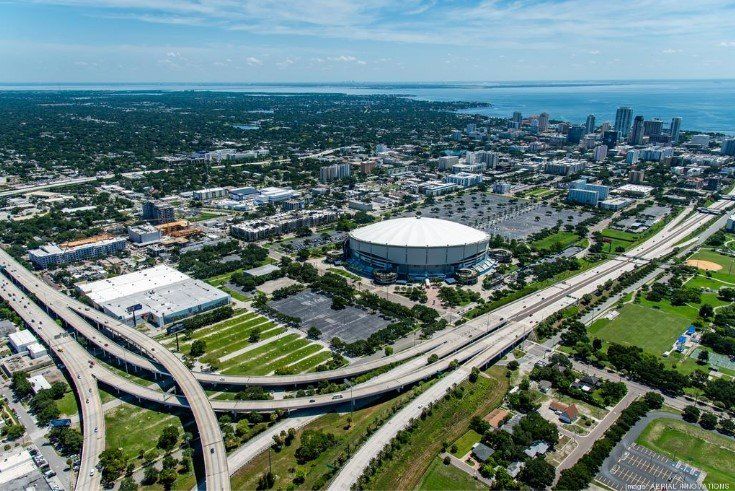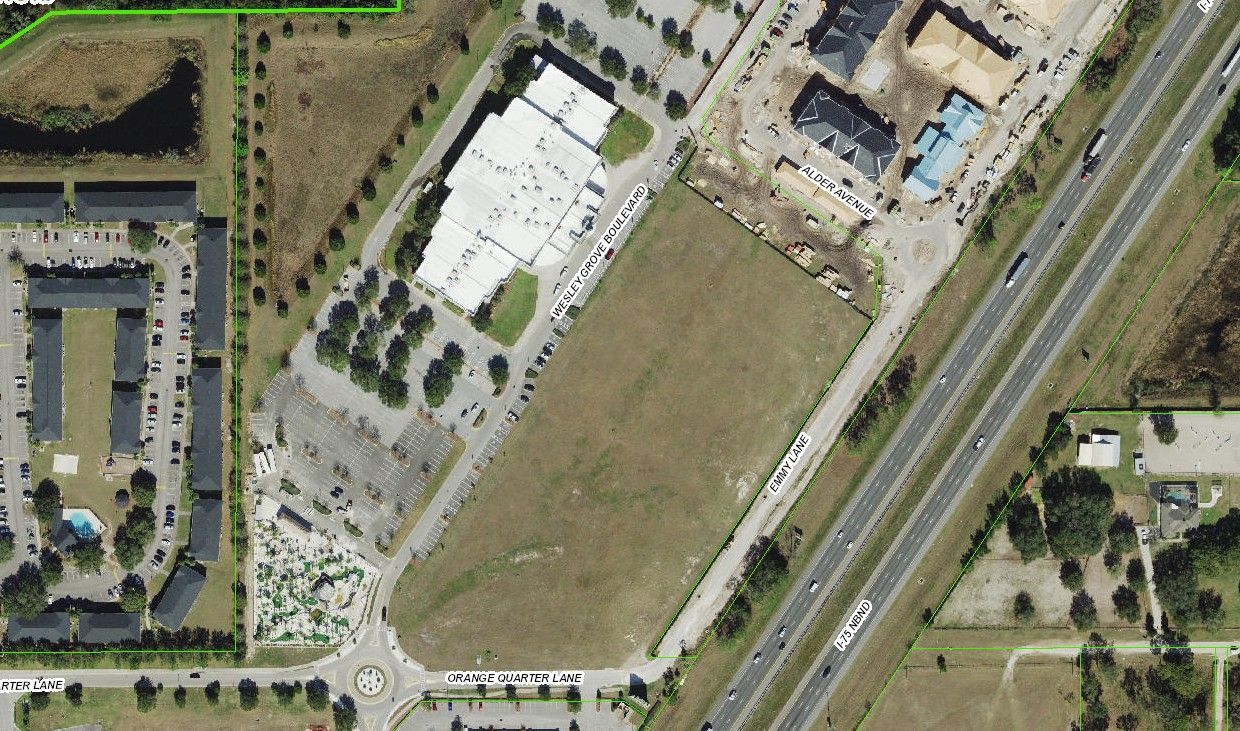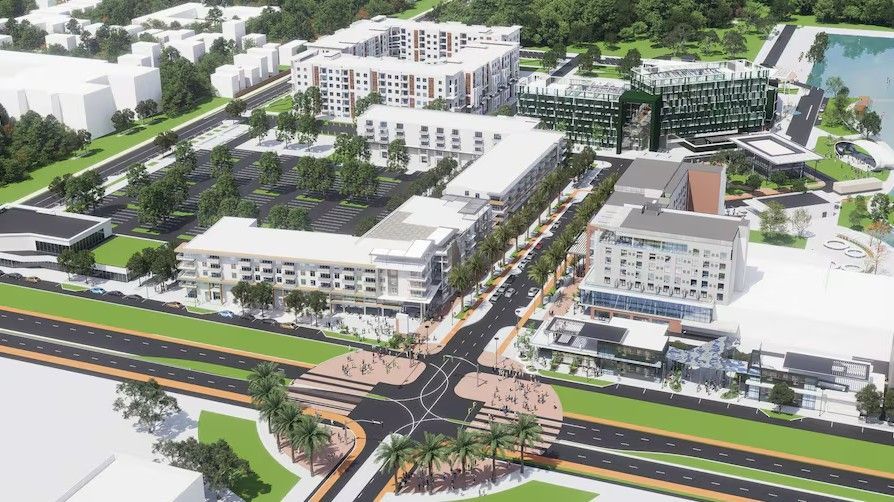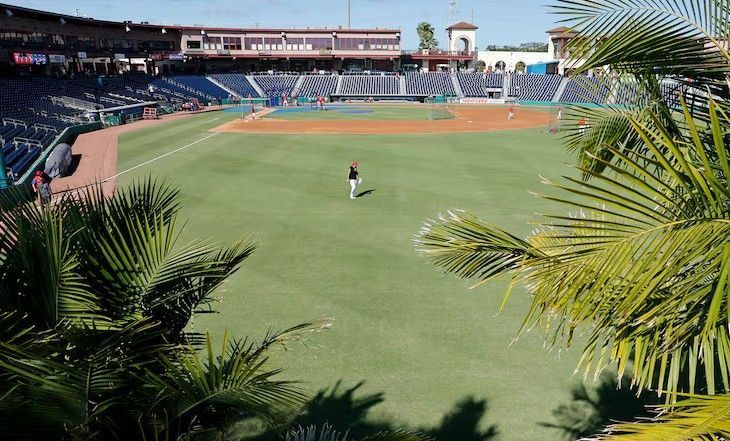Bids for the Historic Gas Plant District

The city of Saint Petersburg requested proposals for the site that Tropicana Field (the Tampa Bay Ray’s stadium) currently sits on. Mayor Welch has designated the area as the Historic Gas Plant District. The proposals were due on Friday, December 2nd. Four bids were submitted from the following groups: Sugar Hill Community Partners, Plus 1 Sports, Restoration Associates, and the Tampa Bay Rays. Mayor Ken Welch will recommend a developer in January and a term sheet with the chosen developer will be completed and a development agreement is expected to be brought to City Council for approval by September or October of 2023.
Sugar Hill Community Partners have proposed to bring the following if selected:
· 5,200 residential units (50% being affordable and workforce housing. 325 units will be developed off-site)
· Two boutique hotels – total of 400 rooms
· 2.7 million SF of office space
· 409,000 SF of retail, including all ground floor uses like libraries, daycare, senior care centers, etc.
· 174,000 SF conference center that will include a 350-key conference center hotel
· 39,000 SF performance hall
· 96,000 SF museum
· 22,000 SF transit hub
The Sugar Hill Team says it intends to bring a mix of office, residential, and commercial properties together versus having separated districts across the 86-acre site. Walkability and highlighting the city’s culture and amenities is a trop priority of the project.
The Tampa Bay Rays partnered with global real estate firm Hines to redevelop the St. Petersburg site. The development team has proposed a 7-million SF redevelopment plan including a mixed-use community surrounding a new ballpark on the 86-acre site. The current lease for the Rays will expire in 2027, and most recently the team has attempted relocating to a site in Hillsborough County. In total the Rays proposal includes:
· 5,700 multi-family units – 850 dedicated to affordable and workforce housing
· 1.4 million SF office space
· 300,000 SF of retail
· 700 hotel rooms
· 600 senior living residences
· 2,500-person entertainment venue
Plans also call for the Dr. Carter G. Woodson African American Museum to be relocated to the site and for a music hall.
50 Plus 1 Sports proposes the development of entertainment and shopping districts as well as an education and tech campus. The proposal breaks into 4 phases. Phase one will build a new stadium and 3.2 million SF will be mixed-use. There will be at least 2 hotels, with ground floor commercial space and 500,000+ SF of office space. Phase 2 includes more parking, a grocery store, the completion of Booker Creek Commons and 2.8 million SF of mixed-use developments. Phase 3 will have 3.7 million SF of mixed-use development, with 200,000 SF of it being office space and residential units offered at different price points. The fourth phase will be mainly residential developments and future off-site developments. In total the proposal included:
- 6,700 multi-family apartments - 50% for affordable and workforce housing.
- A minimum of 3 hotels
- Intermodal Transit Hub
- Education & Tech Campus
- A cultural venue either museum or performance venue
Restoration Associates has partnered with big names such as Dr. Kiran Patel. They plan to build out the 86 acres in 8 phases. They presented two options for development. One is to build a new retractable dome stadium on the 17.3-acre site, or to renovate the current Tropicana Field Stadium rather than demolishing it to build a new one. If no baseball stadium, then 1,000 more workforce and affordable housing units will be made available. Restoration Associates has proposed the following:
- 2,800-3,800 residential units for mixed incomes
- 280,000 SF of self-storage
- 500,000 SF office tower
- Convention Center hotel
- Gas Plant District Memorials
- African American History Museum
Thank you for your interest!
For more information or to get help in determining the value of your property please call or email Mike Cliggitt, MAI, MRICS, CCIM!
Mike Cliggitt, MAI, MRICS, CCIM
813.405.1705 - Direct Line
findvalue@cliggitt.com - email
Saint Petersburg Commercial, Industrial, and Investment Real Estate Appraiser
SHARE CONTENT





